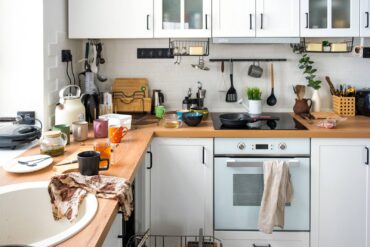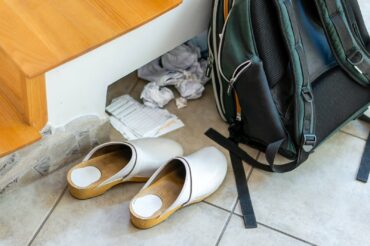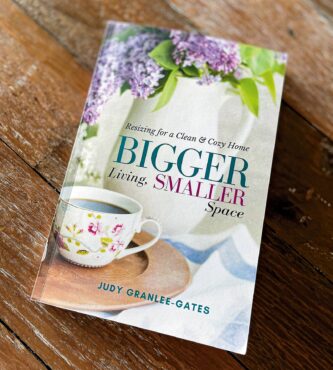 The holidays. They bring on thoughts of warm family gatherings, sparkling decorations, delicious food. Wait. That’s a Hallmark movie background. In real life, the holidays often bring up feelings of anxiety, stress and overwhelm. This article will help change all that.
The holidays. They bring on thoughts of warm family gatherings, sparkling decorations, delicious food. Wait. That’s a Hallmark movie background. In real life, the holidays often bring up feelings of anxiety, stress and overwhelm. This article will help change all that.
 One thing many people lament about is lacking space to entertain or having too much embarrassing clutter to invite guests over. There is no time like now to start making changes and be ready and excited to invite folks into your home to celebrate with you.
One thing many people lament about is lacking space to entertain or having too much embarrassing clutter to invite guests over. There is no time like now to start making changes and be ready and excited to invite folks into your home to celebrate with you.
No matter what your clutter levels, agree to set time aside each week to work on tasks. Just like you make an appointment to go to the dentist or get your tires rotated, put it on your calendar. It can be just an hour a few nights a week, half a day on the weekend or 15 minutes every day. If you have a hard time motivating yourself, find an incentive — such as only allowing yourself to scroll social media after you complete the appointment.
 For the purpose of this article, let’s assume you are hosting dinner guests, not overnight ones.
For the purpose of this article, let’s assume you are hosting dinner guests, not overnight ones.
Let’s look practically at what needs to be done. The spaces guests are looking at are the living and dining room and the bathroom. Guess what? The rest of the house can be off-limits. Close the doors. Tell guests no entry. That was easy, wasn’t it?
So, let’s focus on these spaces first. Start by scanning for things that don’t belong and get those out. Avoid creating another clutter zone by tossing these items anywhere — you want to put them where they live as often as you can. Get rid of trash, empty boxes, all the weird stuff. Now that the things left are hopefully the items that live in that room, you can figure out what’s next.
 It’s also important to review a space for function. Sometimes adding something to solve a clutter problem is a great next step. The entry floor covered in shoes is a trip hazard. But an appropriately sized shoe cabinet or bench can be a game changer for keeping the area clutter-free of trip hazards.
It’s also important to review a space for function. Sometimes adding something to solve a clutter problem is a great next step. The entry floor covered in shoes is a trip hazard. But an appropriately sized shoe cabinet or bench can be a game changer for keeping the area clutter-free of trip hazards.
 Entry Area
Entry Area
Most homes don’t have a grand entry area. A nice one, sure, but buyers don’t usually want to spend the big dollars on the home’s entry. Space is often tight, sometimes nonexistent. Regardless of size, it’s nice to have a spot for shoes, be it shelves, a bench or cabinet, hooks or closet for jackets; and a small table or cabinet for keys, phones, handbags and the like.
If your entry is very minimal, consider wall hooks, shelves or a narrow bench or cabinet to corral items. Larger spaces can benefit from built-in cubbies or lockers, or attractive furniture pieces to stash shoes and bags in. Benches are a favorite in an entry since they give folks in “shoes-off” homes a place to sit to take their shoes on and off.
 Kitchen
Kitchen
This is the heart of the holiday. Time for serious consideration. Cabinets are for storing items, countertops are a workspace. If you have no workspace because so much is out on your counters, you are using your cabinets as long-term storage instead of daily use!
This is a hard one. If your counters are covered, then you have to do a full-on, deep dive. Empty out each cabinet and drawer first, then the counter tops. Items that are used quarterly or less can go elsewhere — the top shelf of the pantry, a shelf in the garage.
People often hang on to items they “might” need, but most can’t recall the last time they actually used it. Or things they used all the time in the past but no longer do. Here’s a thought about getting rid of these things. Set a threshold, a dollar amount on an item — let’s say, $20. Think, if you had to replace it, would $20 matter? Use your threshold and do not sell yourself short. Your peace of mind has value. Don’t trade that for living in a cluttered space you don’t enjoy.
 The kitchen will be a bigger task, but guess what? You don’t live alone most likely, and anyone else who lives there needs to pitch in, in some fashion. And if you can all come to an agreement, the more likely you are to keep things tidy in the long run.
The kitchen will be a bigger task, but guess what? You don’t live alone most likely, and anyone else who lives there needs to pitch in, in some fashion. And if you can all come to an agreement, the more likely you are to keep things tidy in the long run.
Expand storage in cabinets by using bins to group like items (clear is preferable but use what you have or can make out of what you have), risers so you can see things, plate racks and lazy susans. This will create more space and easier access.
The goal is to keep your counters clear to work on, not to store extra stuff.
Bathroom
The bathroom is next. If it’s a bath that is used daily by the family, you may have a little more work to do. If the counter is clear, you are in good shape, but if not, again, assess what is in the cabinets or linen closet if you have one. A good purge is in order.
 Baths and kitchens tend to accumulate expired items, so toss those (make sure to toss medications responsibly, especially prescriptions). Make sure that you have a spot for extra toilet paper so guests don’t get stuck in a tough spot and don’t have to ask you where to find more. If the counter is full of products despite a declutter, perhaps store those in a bedroom for the day.
Baths and kitchens tend to accumulate expired items, so toss those (make sure to toss medications responsibly, especially prescriptions). Make sure that you have a spot for extra toilet paper so guests don’t get stuck in a tough spot and don’t have to ask you where to find more. If the counter is full of products despite a declutter, perhaps store those in a bedroom for the day.
Living and Dining Areas
The living and dining spaces are last on the list. Often, formal dining rooms are in one of two conditions. Abandoned or used for crafts, for office stuff or as a flat surface to pile things on. Either way, you know the drill. Remove trash, put things where they go, donate or toss as needed.
It’s common for furniture no one knows what to do with to end up in living spaces. An odd end table or bookcase. Extra chairs. These often end up making the room look, feel and function smaller than it really is.

Do you have a lot of low items? Tall pieces? Aim for a mix. Taller items like bookcases or cabinets make use of valuable, unused space — vertical space. A short cabinet takes the same footprint as a tall one, but the tall one stores three or more times the stuff. It may be time to get rid of some lesser or nonfunctional items and replace them with more functional ones. Facebook Marketplace or Next Door are great options for buying or selling, along with the apps OfferUp, Mercari and Chime.
Some great trades are things that do double duty. Storage coffee tables, storage ottomans, end tables with drawers or bins, tall cabinets all add storage, look neat and help you manage the smaller stuff in your space.
So many of us keep things because we own them. But what if they don’t serve us well or offer what we need? Time to go. Just like that itchy sweater that makes you insane every time you put it on. Stop putting it on and put it in the donation bin.
Speaking of donations. As stuff is bagged up, get it out of the house. Donate it quickly, otherwise it’s just in the way and people may start to fish stuff out of the bags.
In short order, you will be ready to entertain friends and family and create many great memories. And the bonus is that you are going to love your home so much more and feel relaxed and calm in your tidy space.






























